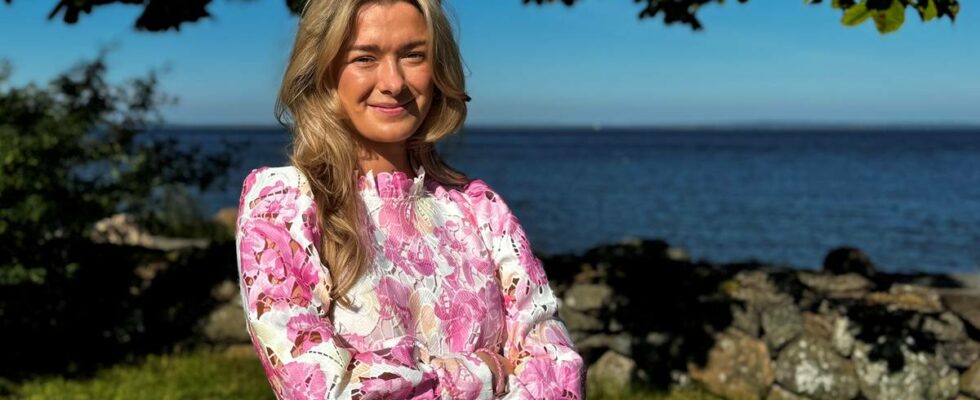Many face the summer with a lump in their throat. We plunge into the water, but it is difficult to avoid the thought of other people’s eyes. We present a summer that lives up to expectations on Instagram, but the only thing the head longs for is a place to lie down in the shade under the parasol, with shame. I have friends who love to play volleyball, but who always find excuses to say no to playing on the beach. I know young people who are reluctant to show themselves in shorts or bikinis. Who are ashamed that they haven’t done more to improve their bodies, whether they think they have too many kilos, too little shape or lack of muscle. How did we end up here? We’ve always had ideas about the ideal body, but I dare say it’s never been as crazy as it is now. Both on social media and in the more traditional media, we are bombarded with a completely unattainable ideal. And the fashion industry follows suit. Was the trial of diversity and shapely bodies just a reluctant blip? A short-term, somewhat fun gig, with models with normal bodies? Slim bodies reminiscent of the heroin chic ideal from the 90s are now pouring out onto the catwalk. We’re back to the skinny era, and the mere thought sends shivers down my spine. Photo: Maryna Tatarenko The ideal of thinness is spreading like wildfire on social media. Where on earth has our healthy ability to react become? Have we completely resigned? I’ve had anorexia for several years, but today I’m healthy, and a while ago I wrote the column “Make TikTok Fun Again” to remind us of the responsibility we adults have towards young people. I know how devastated you can be when your brain gets the idea that you are wrong in every way. I miss the protests and the responsible gene in us. Because what is trending on social media right now? Successful and powerful influencers show us a body ideal that is both unrealistic, unattainable and unhealthy. Even spokespeople who once championed body positivity have been swayed by the resurgence of the skinny trend. It didn’t get better after the diabetes medicine Ozempic was praised to the skies for its slimming effect, and first took Hollywood and then also Norway by storm. At the same time, one of Norway’s most influential influencers, Oskar Westerlin, is filming himself on Snapchat while showing what his breakfast consists of: 28 pills of nutritional supplements that he takes in one gulp. In front of his 430,000 young followers, he claims that the undocumented supplements will lead to increased muscle mass. In the last episode of “Girls of Oslo”, Sophie Elise and Isabel Raad stand at the restaurant Amazonia in Oslo and compare the hardness of their buttock implants. These are Norway’s most powerful influencers, and it doesn’t seem like they give a thought to how it affects their young followers. And no adults seem to react. It is not only the influencers’ behavior on social media that confirms that body culture is on a wild path. During the presentation of this year’s Vixen awards, the culture newspaper Natt & Dags commented on the broadcast body of a 24-year-old woman: “The tits are so far apart, that they only communicate via Skype”. I pinch my arm and ask myself: Am I really reading this here? Because how can we imagine that this does not affect public health? 1 in 10 upper secondary school students struggle with an eating disorder. Children up to the age of 9 follow Norwegian muscle builders. I have healthy, beautiful and completely normal friends who persistently try to conform to the ideals through extreme diets and periodic exercise regimes. Others avoid social meetings and exploration of their own love life, because the current ideal affects how they see their own bodies. The body ideal destroys the long-awaited and effortless summer feeling. In fear of standing out, we follow each other. We admire, we imitate and we allow ourselves to be inspired. This is how we are influenced by which bodies are presented as “correct”. Of course, many people were unhappy with their bodies before we got social media too. But now the forces of the algorithms are so strong that young people end up in harmful echo chambers that disrupt youth. In this body tyranny, I hope that more young people will develop their critical and skeptical sense. But then we are completely dependent on challenging the unrealistic ideals – and those who front them. We must stop, and we must react. I miss reactions based on experience and professional knowledge. I miss more chronicles from health nurses who receive crying students at the health office. I miss protests from mothers and fathers. I miss opinions and action plans from ministers. Without a response – done with care from an entire country – I am worried that the beauty industry and influencers, who also make good money, will be allowed to take a complete monopoly on influencing the self-image of the young. Because when will we understand that bodies cannot be trends? I want to wake up to a world where unattainable bodies are no longer a trend. Where people’s radiance and beauty are admired. Because what really happened to the value of personality and intelligence? I want safe youth in a safe, generous and inclusive body culture. I want change! Published 01.07.2024, at 18.32
ttn-69
The hunt for the summer body – Expression

